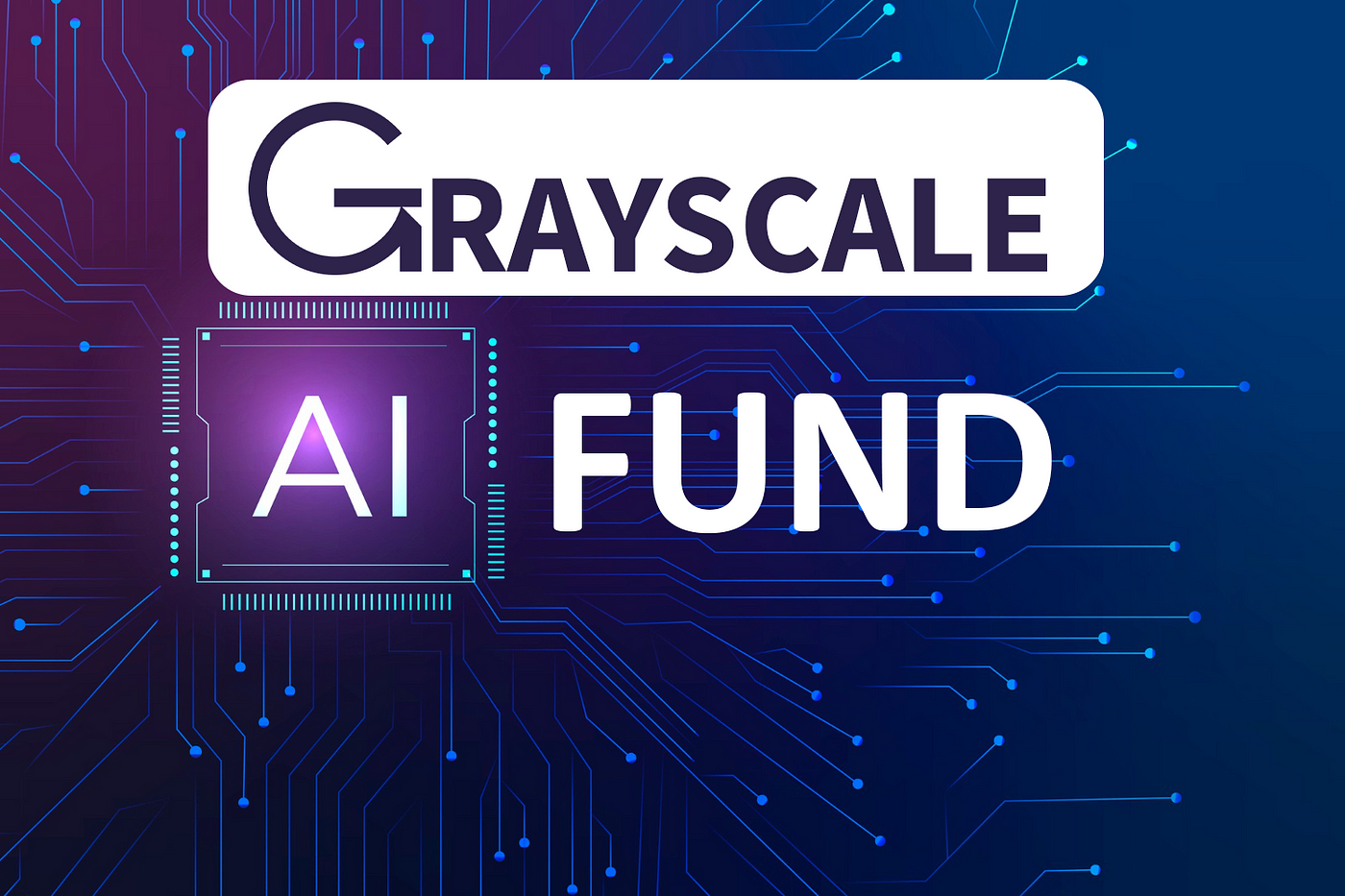Can We Expect Crypto Artificial Intelligence ETF’s in 2025? What Investors Need to Know
“Can we expect crypto artificial intelligence ETF’s in 2025?” With the rapid evolution of AI and blockchain, the financial markets are poised for innovation. This article explores whether these technologies will converge into tradable ETFs by 2025, delving into current trends, regulatory challenges, and the potential impact on investors.
Key Takeaways
- The integration of AI into the crypto market is improving trading platforms, enhancing regulatory compliance, and providing advanced tools for investors.
- The financial sector’s investment in AI is rapidly increasing, with notable advancements such as AI-driven Equity ETFs like AIEQ showcasing the potential for similar innovations in crypto ETFs.
- Investor interest in thematic ETFs targeting AI, blockchain, and robotics is rising due to their potential for long-term growth, diversification within niche sectors, and the transformative impact of these technologies.
The Rise of Crypto and AI Integration

The crypto market is no stranger to innovation, but the advent of AI has catalyzed a new era of enhancements and opportunities. AI crypto projects, which use artificial intelligence in conjunction with blockchain systems, are pushing the envelope of what’s possible in this space. These projects often involve AI tokens, which can be used for various applications, adding a layer of functionality and value to the digital assets.
The incorporation of AI into crypto trading platforms, such as Bitget, has significantly enhanced their functionality by introducing AI features for:
- Grid trading strategies, thus streamlining trading operations
- Real-time market analyses and strategies for mitigating risks, thus improving risk management
- Analyzing historical data to predict future price movements, thus offering valuable insights to traders and investors
AI-driven tools are revolutionizing the crypto trading industry and providing traders with advanced tools and strategies for success.
In addition to trading, AI is vital in regulatory compliance. It has several important functions:
- Scrutinizing transactions to ensure adherence to anti-money laundering (AML) regulations, thereby maintaining platform compliance and minimizing fraudulent activities.
- AI-driven chatbots on exchanges handle customer queries, providing quick and efficient customer service.
- AI-driven robo-advisors provide personalized trading recommendations, enhancing the overall user experience.
Current State of Crypto ETFs
Crypto ETFs have surfaced as a favored investment instrument, providing investors a convenient means to access the crypto market without the need for direct asset holding or using a crypto exchange. These ETFs have seen remarkable success, with spot Bitcoin and Ethereum ETFs ranking among the most successful launches in history. The approval of ETFs like BITO indicates a growing acceptance of cryptocurrencies in mainstream finance. This paves the way for further innovation in the industry.
Nonetheless, securing regulatory approval poses a considerable challenge. Despite the increasing authorization of ETF operations by regulatory bodies, as evidenced by the consideration of a spot bitcoin ETF in the U.S., numerous obstacles remain. A brokerage account is required to buy spot ETFs, and investors must navigate higher fees associated with specialized management and rebalancing costs.
AI’s Impact on the Financial Sector
Investments in AI by the financial sector are skyrocketing. A testament to this is the whopping $20.6 billion invested by the banking sector in AI in 2023 alone, a figure projected to escalate to $97 billion by 2027. With a projected compound annual growth rate of 29% from 2023 to 2027, the financial sector is leading the charge in AI adoption, highlighting its competitive edge in leveraging cutting-edge technology.
One notable example of AI’s impact is the AI Powered Equity ETF (AIEQ), which uses IBM’s Watson platform to analyze thousands of U.S. companies for stock selection. This ETF exemplifies how AI can be harnessed to drive better investment decisions, offering a glimpse into the potential for AI-driven crypto ETFs in the near future. As the market continues to evolve, investors are increasingly looking into ai stocks as a promising area for growth.
Potential for AI-Driven Crypto ETFs

Investors are increasingly drawn to thematic ETFs that target cutting-edge technologies such as AI, blockchain, and robotics, primarily due to their potential for high growth. These ETFs are not only novel but also offer long-term growth opportunities by capitalizing on macro trends and emerging industries. Investors are drawn to these thematic ETFs for their ability to provide diversified exposure within niche sectors, thereby mitigating risks compared to investing in individual companies.
ETFs that combine AI, blockchain, and robotics technologies are expected to see significant growth in the future. This makes them particularly attractive for long-term investors who are looking to capitalize on the transformative potential of these technologies. As AI continues to integrate with the crypto market, the demand for such thematic ETFs is likely to increase, offering new avenues for investment.
Grayscales Decentralized AI Fund

Leading the way in digital asset management, Grayscale Investments has introduced a new Decentralized AI Fund. The fund’s focus lies in financing projects in three primary areas: AI services, tackling centralized AI issues, and the development of AI-related infrastructure. By leveraging blockchain technology, these projects aim to increase transparency, security, and data integrity in AI services.
The fund’s initial investments include the native tokens of several crypto AI protocols such as:
- Bittensor (TAO)
- Filecoin (FIL)
- Livepeer (LPT)
- Near (NEAR)
- Render (RNDR)
These tokens saw a price increase of 1%-3% immediately following the announcement, reflecting positive market sentiment. The Grayscale Decentralized AI Fund aims to provide investors with exposure to the burgeoning AI sector within the crypto ecosystem, and it’s expected to rebalance its holdings quarterly to adapt to market changes.
Grayscale’s approach is not just about investment but also about addressing the risks associated with the proliferation of AI technology. By focusing on decentralized AI protocols, the fund aims to mitigate risks like deep fakes and misinformation, making it a forward-thinking initiative in the AI and crypto space.
Regulatory Challenges and Opportunities

To guarantee investor protection and market stability, regulatory bodies are intensely examining AI-driven crypto ETFs. In the U.S., the SEC considers crypto as a security, requiring firms to register and comply with disclosure requirements. This regulatory scrutiny is essential for bringing greater legitimacy to AI-driven crypto ETFs and attracting institutional investors.
There is also potential for new regulatory frameworks specifically tailored for AI-driven financial instruments. Such frameworks could help mitigate risks associated with market manipulation and fraud, ensuring a more stable and secure investment environment. However, navigating different regulatory environments across countries remains a significant challenge for these innovative financial products.
Investment Strategies for 2025
Looking ahead to 2025, it is likely that long-term investment strategies will pivot towards green cryptocurrencies and ETFs that target nascent technologies. Green cryptocurrencies like Cardano and Solana, designed to be energy-efficient and environmentally friendly, are gaining interest among eco-conscious investors. These cryptocurrencies not only address environmental concerns but also offer sustainable growth potential.
ETFs focused on AI, blockchain, and robotics provide accessibility and professional management, making them suitable even for individual investors without extensive knowledge. By investing in these ETFs, investors can benefit from the professional management and diversified exposure within high-growth sectors, aligning with a strategy that emphasizes long-term gains.
Key Players in the Market
Leading companies such as Nvidia and Micron Technology are spearheading the AI revolution, reaping considerable benefits from the adoption of AI across diverse industries. Nvidia, for instance, has seen remarkable gains due to its advanced AI chips, which are essential for high-performance computing and data centers. Micron Technology is also experiencing substantial revenue and profit boosts, with expectations to conclude the fiscal year at $25 billion in revenue.
SoundHound AI, one of the innovative software companies, is a startup with a rapidly growing customer base, playing a crucial role in integrating AI across industries such as automotive, restaurant, entertainment, and customer service. Their innovative solutions leverage large language models to enhance communication and user experience in these sectors.
These key players are not only driving innovation but also reaping the financial rewards of their investments in AI technology, including the development of advanced ai models.
Technological Innovations Driving the Trend

The current trends in the crypto market are primarily driven by technological innovations. Layer 2 smart contracts, built on top of existing blockchain systems, are making cryptocurrencies faster and more efficient. Polygon (MATIC), for example, supports over 350,000 users daily and can handle up to 7,000 transactions per second, showcasing the potential of Layer 2 solutions.
Another significant innovation is the adoption of green energy in data centers. Nvidia claims that replacing conventional servers with GPU-accelerated systems can significantly reduce energy use in data centers. This shift towards more sustainable technologies is crucial for the long-term viability of both AI and crypto industries, and it’s definitely some cool stuff.
Environmental Considerations
With the expansion of the AI and crypto industries, the importance of environmental considerations also escalates. Data centers in the U.S. accounted for over 4% of the nation’s electricity use in 2022, and this share is expected to reach 6% by 2026. The increasing demand for computing power in the AI industry’s energy consumption is also expected to increase tenfold by 2026, highlighting the need for sustainable practices.
Efforts are underway to connect data centers with renewable energy sources to improve sustainability. President Biden’s push for a 30% tax on cryptocurrency mining reflects the growing concern over the environmental impact of these industries. Adopting green energy in cryptocurrencies will not only reduce carbon emissions but also ensure the long-term sustainability of the crypto market.
Real-World Applications of AI and Crypto
The amalgamation of AI and crypto has resulted in a plethora of real-world applications, effecting transformation in numerous sectors. In the DeFi space, AI contributes to market efficiency by analyzing vast datasets to identify arbitrage opportunities, making trading more precise. AI-driven DeFi platforms like Aave use machine learning algorithms to automate loan approvals, reducing credit risks and streamlining financial services.
Asset tokenization is another groundbreaking application, where real-world assets (RWAs) are turned into digital tokens on the blockchain. This process enables fractional ownership, increased liquidity, and automation of specific actions, offering significant benefits to investors. Major financial institutions like BlackRock and Citigroup are already involved in asset tokenization, underscoring its potential to impact market capitalization.
Investor Sentiment and Market Predictions
Driven by the anticipated substantial growth of the sectors, investor sentiment towards AI, blockchain, and robotics remains highly positive. Despite higher fees, ETFs focusing on these technologies continue to draw interest due to their transformative potential and long-term growth prospects. Thematic ETFs in AI, blockchain, and robotics offer diversified exposure, mitigating some risks while capitalizing on macro trends.
Hedge funds and pension funds are increasing their investments in cryptocurrencies, contributing to a positive outlook for crypto ETFs. As these sectors evolve, thematic ETFs are likely to remain a popular choice for investors seeking to benefit from the ongoing technological revolution and staying informed about crypto trends.
Summary
The intersection of AI and crypto is ushering in a new era of financial innovation. From AI-driven trading tools and risk management to the rise of thematic ETFs targeting advanced technologies, the potential for growth and transformation is immense. Grayscale’s Decentralized AI Fund exemplifies the forward-thinking initiatives that are shaping the future of this space.
As we look ahead to 2025, it is clear that AI-driven crypto ETFs will play a pivotal role in the investment landscape. By staying informed about regulatory developments and adopting sustainable practices, investors can navigate this dynamic market effectively. The journey of AI and crypto integration is just beginning, and the opportunities it presents are boundless.
Frequently Asked Questions
What are AI-driven crypto ETFs?
AI-driven crypto ETFs are exchange-traded funds that utilize artificial intelligence for trading, risk management, and other investment strategies.
How do AI tools enhance crypto trading platforms?
AI tools enhance crypto trading platforms by offering real-time market analyses, automating transactions, managing risks, and improving customer support through AI-driven chatbots and robo-advisors. These features lead to more efficient and informed trading decisions.
What is the Grayscale Decentralized AI Fund?
The Grayscale Decentralized AI Fund is an initiative by Grayscale Investments that supports decentralized AI projects, addresses centralized AI issues, and builds AI-related infrastructure.
What are the environmental considerations for AI and crypto industries?
The environmental considerations for AI and crypto industries include the growing energy consumption and the need to adopt green energy practices to reduce carbon emissions. It’s crucial to connect data centers with renewable energy sources.
Why are thematic ETFs focusing on AI, blockchain, and robotics gaining popularity?
Thematic ETFs focusing on AI, blockchain, and robotics are gaining popularity because they offer high-growth potential, diversified exposure within niche sectors, and capitalize on transformative macro trends.

